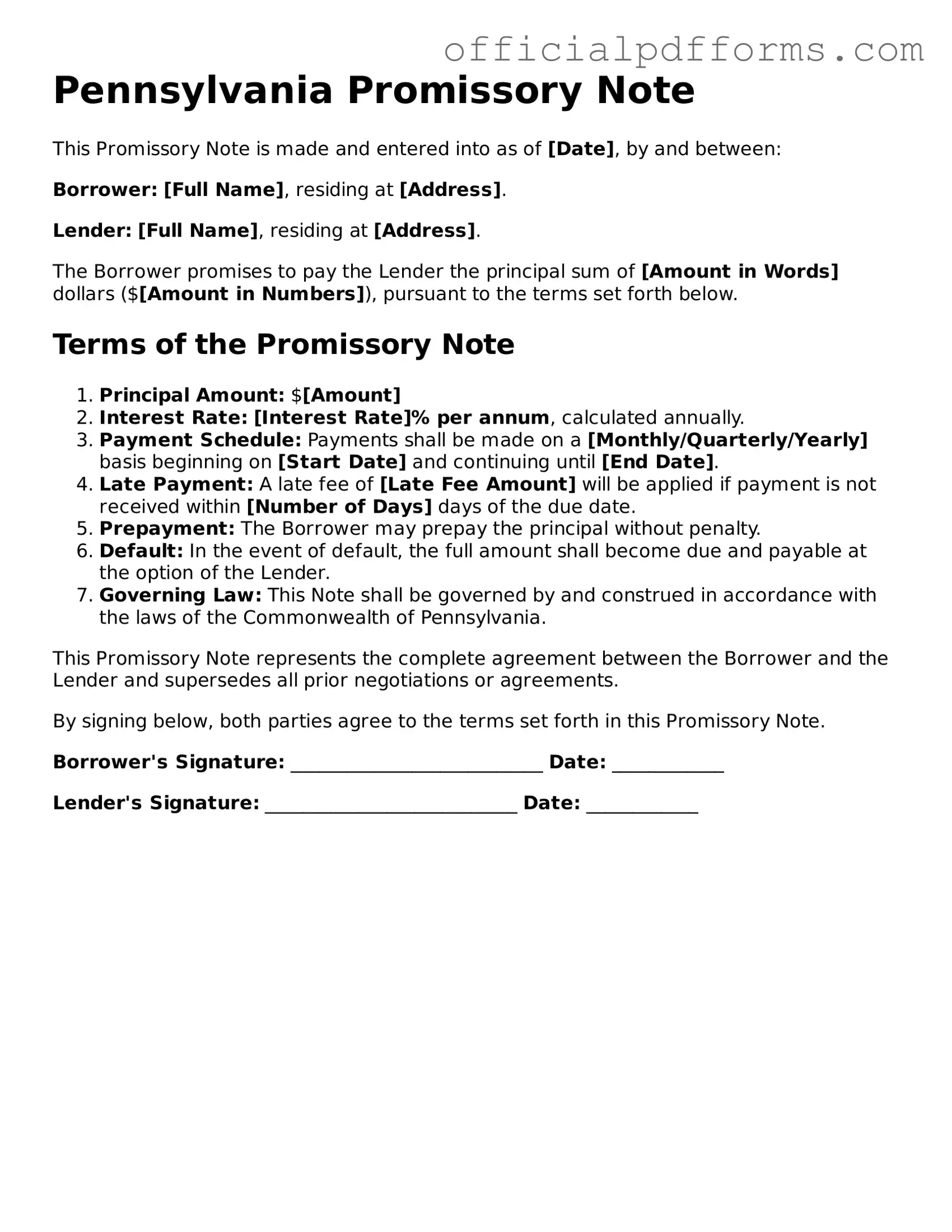What is a Pennsylvania Promissory Note?
A Pennsylvania Promissory Note is a written agreement in which one party promises to pay a specific amount of money to another party at a predetermined time or on demand. This document serves as a legal record of the debt and outlines the terms of repayment, including interest rates, payment schedules, and any consequences for non-payment. It is essential for both the lender and borrower to clearly understand the terms before signing.
Several key elements are usually included in a Pennsylvania Promissory Note:
-
Parties Involved:
The names and addresses of both the borrower and lender.
-
Principal Amount:
The total amount of money being borrowed.
-
Interest Rate:
The percentage of interest that will be charged on the loan.
-
Payment Terms:
Details on how and when payments will be made, including due dates.
-
Default Terms:
Conditions that define what happens if the borrower fails to make payments.
Is a Promissory Note legally binding in Pennsylvania?
Yes, a Promissory Note is legally binding in Pennsylvania, provided it meets certain requirements. For it to be enforceable, the note must be in writing, signed by the borrower, and contain clear terms regarding the repayment of the loan. If these conditions are met, the lender can take legal action to recover the owed amount if the borrower defaults.
Can a Promissory Note be modified after it has been signed?
Yes, a Promissory Note can be modified after it has been signed, but both parties must agree to the changes. It is advisable to document any modifications in writing, with both parties signing the revised terms. This helps to avoid misunderstandings and provides a clear record of the agreed-upon changes.
What should I do if the borrower defaults on the Promissory Note?
If a borrower defaults on a Promissory Note, the lender has several options:
-
Contact the borrower to discuss the situation and explore possible solutions.
-
Review the terms of the note to understand the default provisions.
-
Consider sending a formal demand letter requesting payment.
-
If necessary, seek legal advice to understand the options for pursuing collection through the court system.
Each situation is unique, so it is important to assess the circumstances carefully before taking action.
